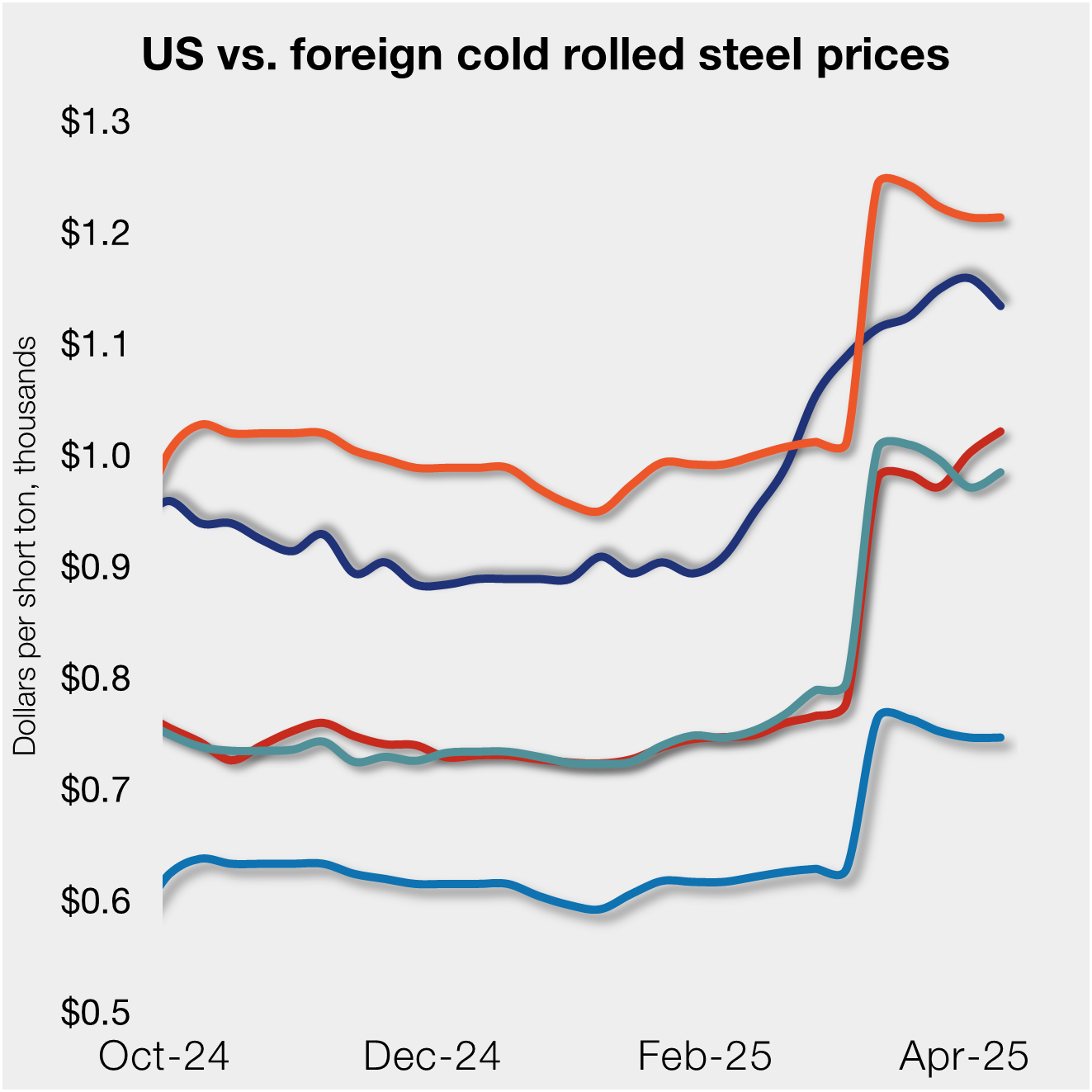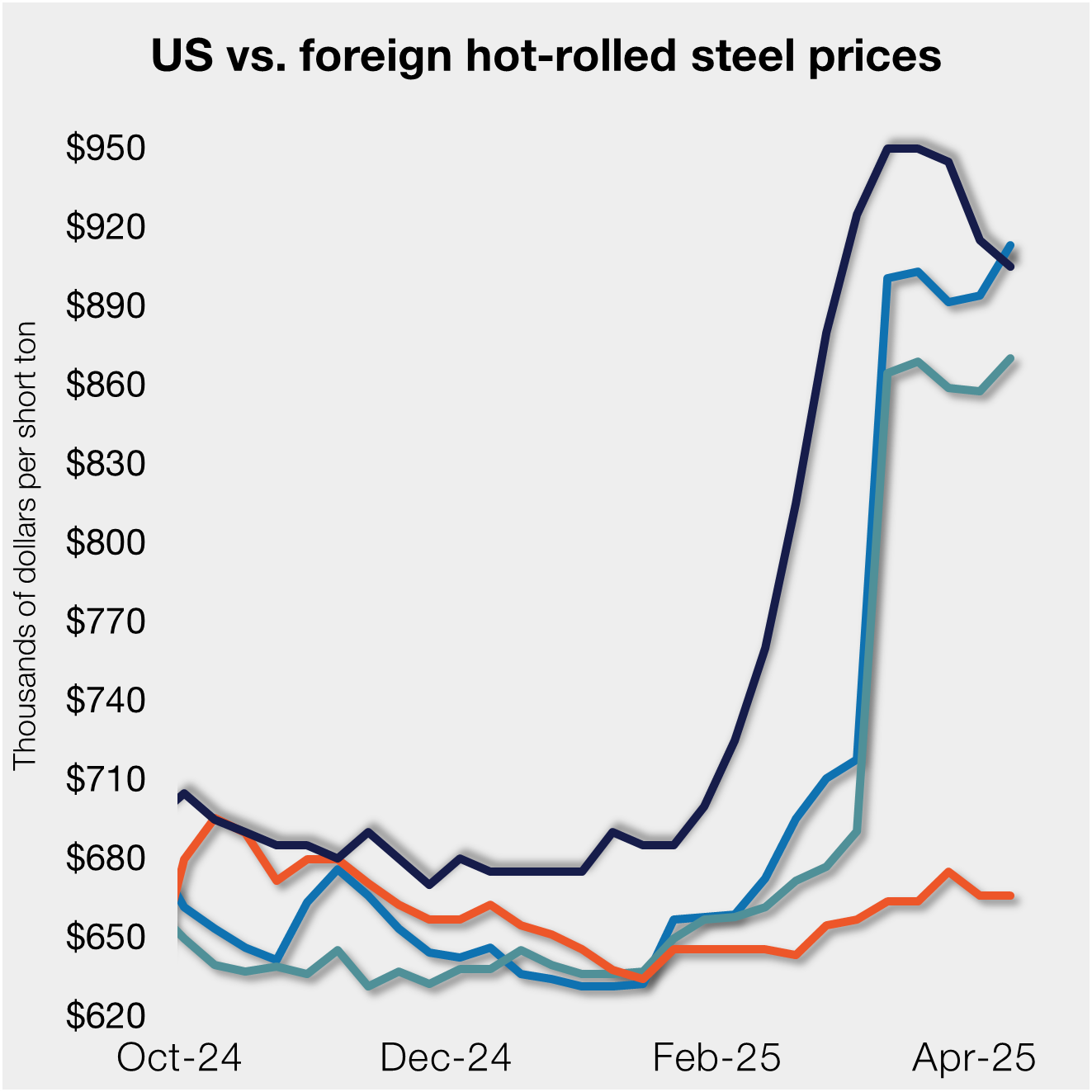Steel Products

Backlogs Worry OEMs and Service Centers
Written by David Schollaert
February 22, 2022
Strong downstream demand for steel is expected through the first half of 2022, but unfilled orders and backlogs resulting from supply-chain troubles and labor shortages may wreak havoc in the second half, cautioned a panel of OEM and service center executives during the Tampa Steel Conferences last week.
![]() “We’re certainly seeing strong demand for the first half of the year, but I’m concerned for the second half. … The main issue are the backlogs. It may be highlighted on manufacturing, but it’s everywhere,” said Bob Elsasser, vice president of procurement at Columbus, Neb.-based Behlen Manufacturing Co.
“We’re certainly seeing strong demand for the first half of the year, but I’m concerned for the second half. … The main issue are the backlogs. It may be highlighted on manufacturing, but it’s everywhere,” said Bob Elsasser, vice president of procurement at Columbus, Neb.-based Behlen Manufacturing Co.
Elsasser made the remarks during a steel buyers’ panel. Other panelists were John Farley, senior vice president and chief operations officer at Tampa, Fla.-based service McNichols Co., and Mike Lerman, a president at South Bend, Ind.-based service center Steel Warehouse.
While rapidly falling steel prices grab headlines, OEMs and service centers might be even more concerned with supply-chain restrictions, rising labor costs and higher freight rates.
“Labor challenges are suppressing steel demand right now,” said Farley. “There could be a lot more demand for steel right now if we could work through backlogs.”
Finding and retaining labor is a challenge, said Lerman. “The commercial folks are forecasting a healthy increase in demand, and the operational side is trying to understand how they’ll get it done when you don’t have the space, parts, or people. And there’s excess inventory, you can’t convert it.
{loadposition reserved_message}
“The ripple effects from supply-chain and labor troubles will have greater effect on final steel demand than pricing will,” Lerman added. “There’s commercial demand. But operationally, how do we get there” to meet it?
The panelists agreed that construction demand is strong and consistent across the country. There is growth from data centers and warehousing to life sciences and healthcare. Large urban areas are seeing a boost in mulitresidential construction as well.
“Distribution and warehousing can’t be built fast enough, and that’s not going to stop anytime soon,” said Farley. “Fabricators and N-GOES expects a particularly strong year for steel demand.”
“There seems to be a theme that most industries have forecast an increase for this year, though it certainly doesn’t apply to all,” added Elsasser.
And falling prices are still a concern, especially with the resulting decline in inventory values.
“Declining steel prices and rising labor costs will present some of the greater challenges for the steel sector,” said Farley.
“It’s certainly a challenge to enforce deals when prices are decreasing, but it’s just a function of pricing dynamics” said Lerman. “It’s a challenge to ensure deals are being honored.”
“On the way up, buyers were happy to take material they had confirmed at lower levels but have selective amnesia when prices are moving in the opposite direction,” noted Elsasser. “The same pricing dynamics are still at play on a downtrend.”
By David Schollaert, David@SteelMarketUpdate.com

David Schollaert
Read more from David SchollaertLatest in Steel Products

SMU flat-rolled market survey results now available
SMU’s latest steel buyers market survey results are now available on our website to all premium members. After logging in at steelmarketupdate.com, visit the pricing and analysis tab and look under the “survey results” section for “latest survey results.” Past survey results are also available under that selection. If you need help accessing the survey results, or if […]

CRU tariff webinar replay now available
CRU’s latest webinar replay on how Trump’s tariffs affect the global steel market is now available on our website to all members. After logging in at steelmarketupdate.com, visit the community tab and look under the “previous webinars” section of the dropdown menu. You’ll find not only this special CRU webinar but also all past Community […]

US, offshore CRC prices diverge
US cold-rolled (CR) coil prices declined this week, slipping for the first time since early February. Most offshore markets deviated, moving higher this week.

Construction growth slowed in March on tariff woes: Dodge
The decline comes after reaching a record high in January to kickstart the year.

Return of S232 zapped gap between US and EU HR prices, Asian HR remains cheaper
Domestic hot-rolled (HR) coil prices declined this week for a third straight week. Most offshore markets bucked the trend and gained ground. Uncertainty in the US market around tariffs, especially after “Liberation Day,” caused US prices to slip as buyers moved to the sidelines. It’s unclear to date whether the 90-day pause on the more […]
